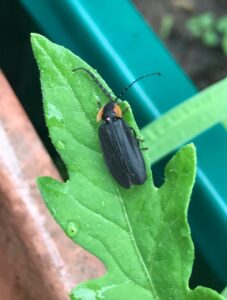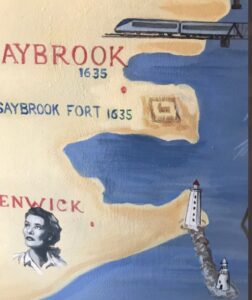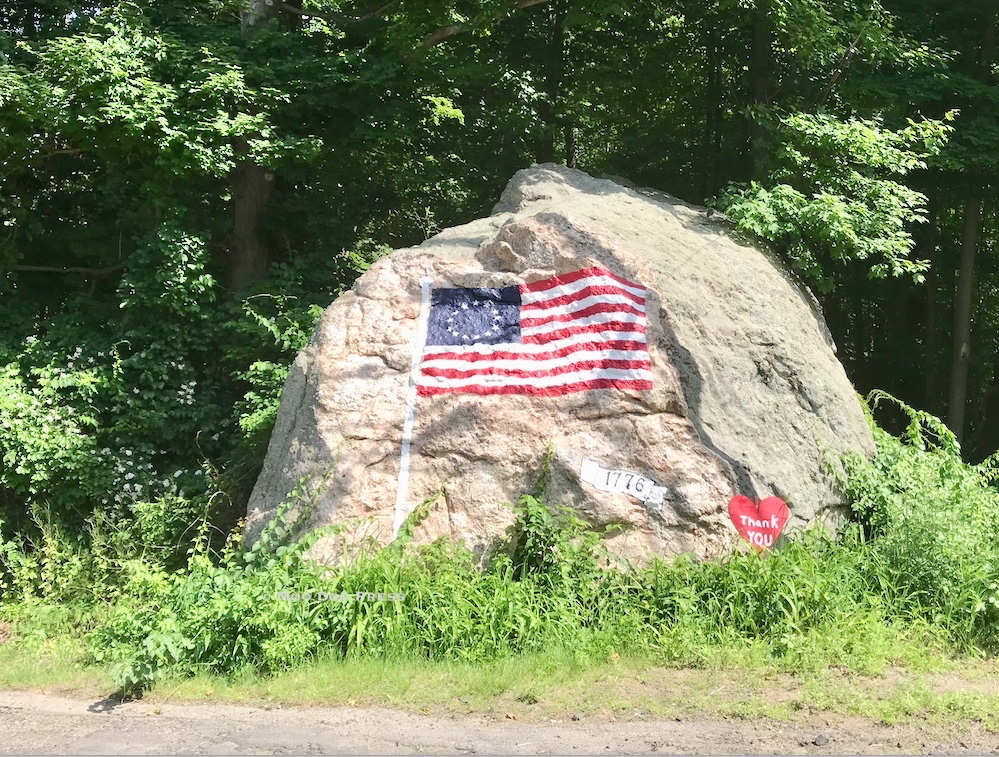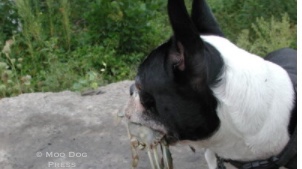COVID-19 Era: Flag Rock, Time Technologies To Remember
“The etymology of the word Muhheakunnuk according to original signifying is great waters or sea, which are constantly in motion, either flowing or ebbing…”
— Connecticut's Indigenous Peoples by Lucianne Lavin, p. 35
Know. Unlearn. Ask questions. Read. Listen. Then. Now. Why not?
It is good to have traveled extensively to see and live in many different communities and habitats, to have worked alongside all sorts of humans. To return full circle to the beginning, this time with a library of books, images, collected experiences; true treasure. Tempered by life, objects and oddities serve as touchstones now; time to reflect, garden, walk, write. Re-visit backroads and rivers, discover new businesses and connections.
“Flag Rock: Originally known as Lorenzo Dow's Rock or Pulpit Rock, this large landmark is on the south side of Candlewood Hill Road near the intersection of Maple Avenue West Reverend Lorenzo Dow was a Methodist circuit rider preacher who is said to have preached on the rock in the 1790's, hence the name Pulpit Rock. In 1942 William Neff, who lived across the street, painted a large American Flag on the rock after Pearl Harbor was bombed. This symbol of local patriotism originally featured 48 stars and golden flagpole and tassels. In 1976 in honor of the bicentennial the flag was revised to feature the original 13 stars. The rock was maintained by members of the Neff Family until the early 21st century” according to a history of local landmarks published by Haddam Historical Society.
Keepers of information, storehouse of knowledge. Unlock and learn. Follow the trail, find the people who know the community. Local history kept by libraries. Technologies evolving to overlay past and present for travelers far and near. Walk and imagine the possibilities to tell stories.
#ReplayAR locks photos in place at any real-world location so others will be able to discover and view them in #AR, It's basically #Instagram meets #PokemonGo.
LA Tech Startup Is Using #AugmentedReality to Preserve #LA's Invisible #History https://t.co/EUbFzju3zM pic.twitter.com/85ePH0fOaQ
— Rob Crasco😷#XR #AI #Futurist #Tech #Influencer (@RoblemVR) May 14, 2021
While out and about see remarkable people. Connect via Twitter. Learn more.
#Hartford (Some of your riders @EHorsewomen?) https://t.co/vhu0c2JQGp
— Moo Dog Press (@MooDogPress) May 21, 2021
Imagine what could be. Then try to solve how to get there.
The Catalina is another aircraft I’ll be talking about on May 31 at 6:00 pm PDT during my virtual presentation for the Museum of Flight.https://t.co/GIcGEGljM5 https://t.co/3KxFtic3kv
— Eileen Bjorkman (@AviationHistGal) May 21, 2021

A beetle that is called a firefly or lightning bug, a regional word used to describe this small creature.
Three books worth highlighting. All work together to decode and furnish wisdom while walking a landscape and seeing through time. Think.

A detail of a mural at the Connecticut River Museum in Essex, seen on a tour in 2019. Note the late great Katharine Hepburn, whose beloved home of choice was Saybrook. Also note the sketched-in fort and date.
One is about the humans and a continent before Europeans ventured here. A long read for July and thinking about change as a constant in life and on the planet.
A recently published book is about foraging and botany, wild food.
The third, a slim volume that focuses on a fort, the clash of two populations, a journey to uncover pieces of the larger story.
At 480 pages, Connecticut's Indigenous Peoples: What Archaeology, History, and Oral Traditions Teach Us About Their Communities and Cultures
by Lucianne Lavin, is a book that stands as a landmark for understanding land, people, time. Editor is Rosemary Volpe, Paul Grant-Costa, contributor; published 2013 by Yale University Press.
James T. Powers is author of On the Edge of Uncertainty: The Siege and Battles of Saybrook Fort during the Pequot War, 1636-1637, published 2020 by Old Saybrook Historical Society (OSHS) and printed by Essex Printing. “We hope that reading this important story will lead you to many journeys in your pursuit of preserving, protecting and promoting our history.” — Marie McFarlin, president of OSHS. (Having explored Saybrook and always returning, this book is a welcome key to a big picture view. A previous story linked here.)
Feasting Wild In Search of the Last Untamed Food by Gina Rae La Cerva published 2020 includes this note in the front matter by the publisher “Greystone Books gratefully acknowledges the Musqueam, Squamish, and Tsleil-Waututh peoples on whose land our office is located.”
All is connected and tidal. Reading this trio of well-written and researched books is food for the mind.
Infectious disease emergence linked to land use change.
Shouldn't be a surprise.. land use change typically encroaches on/fragments natural systems, and increases contact betwn human/livestock systems and wildlife systems
We need a big picture ecosystem/one health perspective. https://t.co/5ah4XEqX0J— Hume Field (@HumeField) June 30, 2020
Worth repeating and remembering, the above tweet is from 2020.
Grow or mow. Sometimes both. Choose what will grow and what will be suppressed. Listen by observation. Apply that to more than gardens. Pruning shrubs and shaping a garden does not make me want to be a hairdresser (though it is a profession that combines design, chemistry, human relations, more than a bit of psychology and counseling as listening plus artistry). Snipping and shaping vegetation allow thoughts to flow, to be caught as writing later. What next? Time will tell.
Note: Though vaccinated, will continue wearing a mask, working remote and practicing distancing as the summer rolls out. Fireworks for Memorial Day is something new (prefer the explosive blooms of bee balm, quieter and more enjoyable, especially with a dog terrified of the loud noises that used to be around Independence day only. Respect others and hang in there.




